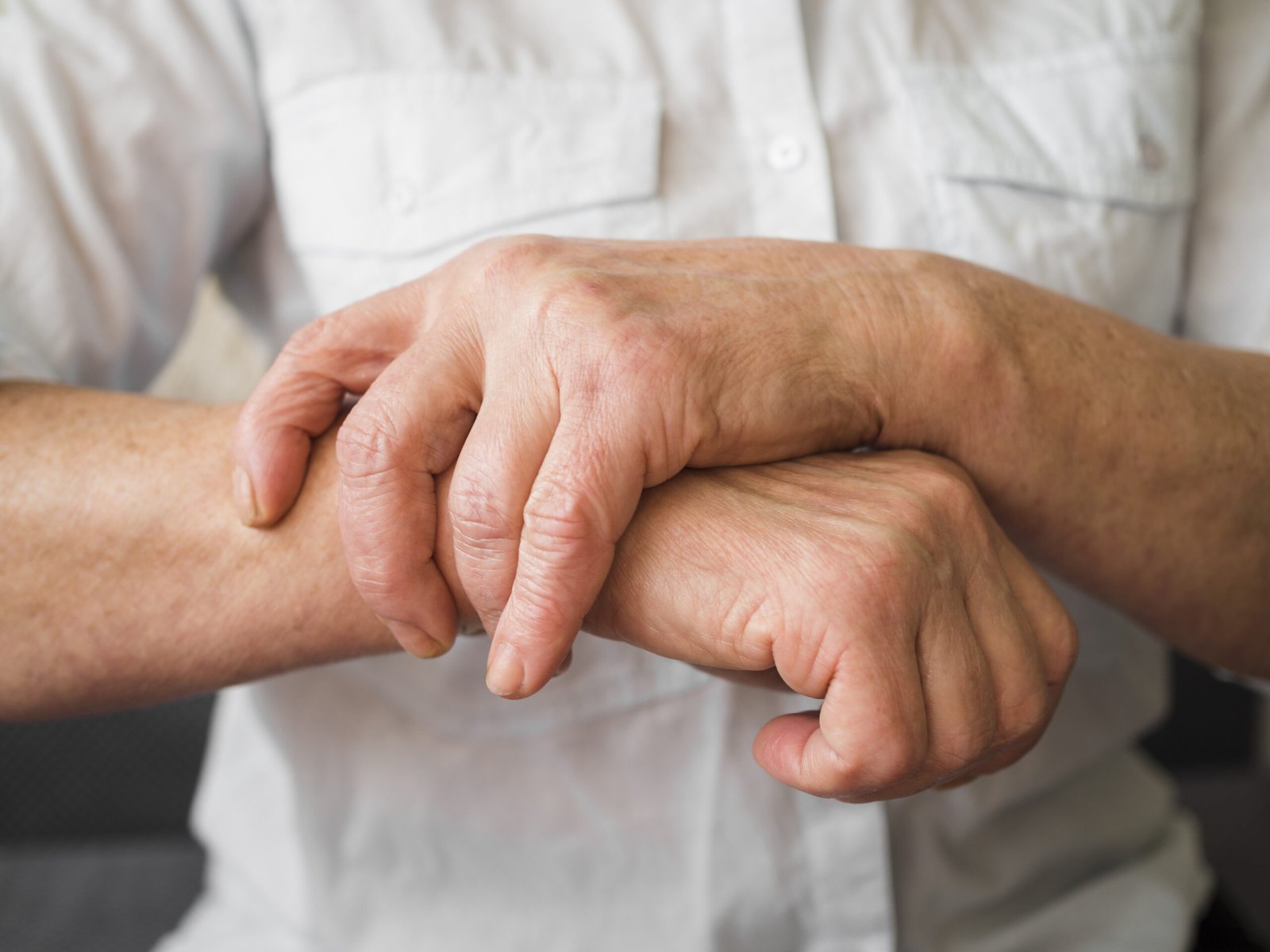Cancer: Understanding the Disease and Its Impact
Table of Contents
Introduction
Cancer is a formidable group of diseases characterized by the uncontrolled growth and spread of abnormal cells. It is a leading cause of morbidity and mortality worldwide, with a profound impact on individuals, families, and communities. Understanding the complexities of cancer is crucial for effective prevention, early detection, and treatment.
Cancer can arise in almost any part of the body, affecting organs, tissues, and even the blood. It is a result of genetic mutations that allow cells to proliferate uncontrollably, forming tumors or infiltrating surrounding tissues. These abnormal cells can also metastasize, spreading to other parts of the body and impairing normal organ function.
The burden of cancer is substantial, with millions of new cases diagnosed each year and millions of lives lost to the disease. Despite advancements in medical research and treatment, cancer remains a formidable challenge, requiring a multidisciplinary approach to combat effectively.
In this article, we will delve into the concept of cancer, exploring its various forms, historical context, global incidence, demographic trends, common symptoms, treatment modalities, prevention strategies, and conclude with a reflection on the ongoing efforts to combat this complex disease. Understanding cancer is the first step towards addressing its challenges and improving outcomes for those affected.
Concept of cancer
Cancer is a group of diseases characterized by the abnormal and uncontrolled growth of cells. Normally, cells grow, divide, and die in a controlled manner. However, cancerous cells continue to divide and grow, forming a mass of tissue called a tumor. Cancerous cells can also invade nearby tissues and spread to other parts of the body through the bloodstream or lymphatic system, a process known as metastasis.
The development of cancer is often the result of genetic mutations that can be inherited or acquired over a person’s lifetime. These mutations can disrupt the normal processes that control cell growth and division, leading to the formation of cancerous cells. Risk factors for cancer include age, tobacco use, unhealthy diet, physical inactivity, excessive alcohol consumption, exposure to radiation or certain chemicals, and family history of cancer.
Cancer can affect almost any part of the body and can occur in different forms. There are more than 100 types of cancer, each with its unique characteristics and behavior. Some common types of cancer include breast cancer, lung cancer, colorectal cancer, prostate cancer, and skin cancer. Each type of cancer is classified based on the type of cells involved and the location in the body where the cancer begins.
Understanding the concept of cancer is crucial for developing effective prevention, early detection, and treatment strategies. By studying the genetic and molecular changes that drive cancer development, researchers can develop targeted therapies that specifically target cancer cells while sparing healthy cells. Early detection through screening tests can also help detect cancer at an early stage when it is more treatable.
Overall, cancer is a complex and challenging disease that requires a comprehensive approach involving research, education, prevention, and treatment to reduce its impact on individuals and society.
Variations of Cancer
Cancer is a complex disease with many different variations, each with its unique characteristics and treatment challenges. Some of the main variations of cancer include:
- Carcinomas: Carcinomas are cancers that originate in the epithelial cells, which are the cells that line the organs and tissues of the body. The most common types of carcinoma include breast, lung, prostate, and colorectal cancer.
- Sarcomas: Sarcomas are cancers that originate in the connective tissues, such as bone, muscle, cartilage, and fat. They are less common than carcinomas but can be more aggressive.
- Leukemias: Leukemias are cancers that affect the blood and bone marrow, where blood cells are produced. They result in the overproduction of abnormal white blood cells, which can interfere with normal blood cell production.
- Lymphomas: Lymphomas are cancers that affect the lymphatic system, which is part of the immune system. They originate in the lymphocytes, a type of white blood cell, and can affect the lymph nodes, spleen, and other lymphatic tissues.
- Melanomas: Melanomas are cancers that originate in the melanocytes, which are the cells that produce melanin, the pigment that gives skin its color. Melanomas are most often associated with skin cancer but can also occur in other parts of the body, such as the eye.
- Brain and spinal cord tumors: These tumors can be benign or malignant and can affect the brain, spinal cord, or surrounding tissues. They can cause a range of symptoms, depending on their location and size.
- Other rare types: There are many other rare types of cancer that can affect various organs and tissues in the body. These include cancers such as mesothelioma, a cancer of the mesothelial cells that line the lungs, abdomen, and other organs, and neuroblastoma, a cancer that develops in nerve tissue.
Each type of cancer has its unique characteristics, including its location, behavior, and response to treatment. Understanding these variations is essential for developing targeted therapies that can effectively treat the disease while minimizing side effects.
Historical Perspective
Cancer has been a concern for humanity throughout history, with evidence of the disease dating back to ancient times. The earliest known description of cancer was found in the Edwin Smith Papyrus, an ancient Egyptian medical text dating from around 1600 BCE. The text describes cases of tumors and ulcers that were likely cancerous.
Ancient Greek physicians, such as Hippocrates and Galen, also documented cases of tumors and growths, providing some of the earliest insights into the nature of cancer. However, the understanding of cancer remained limited, and treatments were often ineffective and based on superstition rather than science.
During the Renaissance period, there was a greater emphasis on scientific inquiry and observation, leading to advancements in the understanding of anatomy and disease. However, the true nature of cancer remained elusive, and it was often viewed as a localized swelling or growth rather than a systemic disease.
The 19th century saw significant advancements in the understanding of cancer, with the development of the microscope enabling scientists to study cells in greater detail. In 1838, the German pathologist Rudolf Virchow proposed that cancer arises from cells, laying the foundation for the modern understanding of the disease.
The 20th century brought further advancements in cancer research, including the discovery of radiation therapy and chemotherapy as effective treatments for certain types of cancer. The identification of oncogenes and tumor suppressor genes in the latter half of the century provided new insights into the genetic basis of cancer.
Today, cancer research continues to advance, with a focus on personalized medicine, immunotherapy, and targeted therapies. While significant progress has been made in the fight against cancer, it remains a formidable challenge, highlighting the need for continued research and innovation in cancer prevention, detection, and treatment.
Incidence and Demographic Data
Cancer is a significant global health concern, with millions of new cases diagnosed each year. The incidence of cancer varies widely depending on the type of cancer, geographical location, and demographic factors. Here is an overview of the incidence and demographic data related to cancer:
- Global Incidence: According to the World Health Organization (WHO), there were an estimated 19.3 million new cancer cases and 10 million cancer-related deaths worldwide in 2020. These numbers are expected to rise to 28.4 million new cases and 16.3 million deaths by 2040.
- Regional Variation: The incidence of cancer varies by region, with higher rates reported in developed countries. In 2020, the highest cancer incidence rates were reported in Australia/New Zealand, Europe, and North America, while the lowest rates were reported in Africa and Asia.
- Gender: Cancer affects both men and women, but the incidence rates can vary between genders. In 2020, lung cancer was the most common cancer in men worldwide, while breast cancer was the most common in women.
- Age: The risk of developing cancer increases with age, with the majority of cancer cases diagnosed in people over the age of 65. However, cancer can occur at any age, and certain types of cancer, such as leukemia, are more common in children and young adults.
- Socioeconomic Factors: Socioeconomic factors such as income, education, and access to healthcare can influence the incidence of cancer. People from lower socioeconomic backgrounds may be at a higher risk of developing cancer due to factors such as smoking, poor diet, and limited access to screening and treatment.
- Ethnicity: Certain ethnic groups may have a higher incidence of specific types of cancer. For example, African Americans have a higher incidence of prostate cancer, while Asian Americans have a higher incidence of stomach and liver cancers.
- Environmental Factors: Environmental factors such as pollution, radiation, and exposure to carcinogens can increase the risk of developing cancer. Lifestyle factors such as smoking, alcohol consumption, and obesity are also significant contributors to cancer risk.
Understanding the incidence and demographic data related to cancer is essential for developing effective prevention and treatment strategies. By targeting high-risk populations and addressing modifiable risk factors, it is possible to reduce the burden of cancer worldwide.
Symptoms
The symptoms of cancer can vary widely depending on the type and location of the cancer. Some cancers may cause noticeable symptoms early on, while others may not cause any symptoms until later stages. Here are some common symptoms associated with cancer:
- Persistent Fatigue: Fatigue that doesn’t improve with rest can be a symptom of many cancers. It is often described as feeling tired, weak, or lacking energy.
- Unexplained Weight Loss: Losing weight without trying, especially if it’s significant or persistent, can be a sign of cancer. This is particularly true for cancers of the pancreas, stomach, esophagus, or lung.
- Pain: Persistent pain, especially if it’s severe or not related to a known injury or condition, can be a symptom of cancer. The type of pain can vary depending on the location of the cancer.
- Changes in Bowel or Bladder Habits: Changes in bowel habits, such as diarrhea, constipation, or narrowing of the stool, can be a sign of colorectal cancer. Similarly, changes in bladder habits, such as increased frequency or blood in the urine, can be a sign of bladder or prostate cancer.
- Persistent Cough or Hoarseness: A persistent cough that doesn’t go away or hoarseness that lasts for more than a few weeks can be a sign of lung, throat, or thyroid cancer.
- Skin Changes: Changes in the size, shape, or color of a mole or other skin lesion can be a sign of skin cancer. Other skin changes, such as yellowing of the skin or eyes (jaundice), can be a sign of liver or gallbladder cancer.
- Difficulty Swallowing: Difficulty swallowing, also known as dysphagia, can be a sign of esophageal, throat, or stomach cancer.
- Persistent Indigestion or Discomfort: Persistent indigestion, stomach pain, or discomfort after eating can be a sign of stomach, esophageal, or ovarian cancer.
- Changes in Lymph Nodes: Swollen or enlarged lymph nodes, especially if they are painless, can be a sign of cancer that has spread to the lymph nodes.
- Other Symptoms: Other symptoms of cancer can include fever, night sweats, unexplained bruising or bleeding, and changes in appetite.
It’s important to remember that these symptoms can also be caused by other, less serious conditions. However, if you experience any of these symptoms and they persist or worsen, it’s important to see your healthcare provider for a proper evaluation. Early detection and treatment can significantly improve the outcome for many types of cancer.
Treatment
The treatment for cancer depends on several factors, including the type and stage of the cancer, as well as the patient’s overall health and preferences. Here are some common treatment options for cancer:
- Surgery: Surgery is often used to remove the cancerous tumor and surrounding tissue. It is most effective for solid tumors that are localized and have not spread to other parts of the body.
- Chemotherapy: Chemotherapy uses drugs to kill cancer cells or stop them from growing. It is often used in combination with surgery or radiation therapy to treat cancer that has spread or to shrink tumors before surgery.
- Radiation Therapy: Radiation therapy uses high-energy rays or particles to kill cancer cells. It is often used to treat solid tumors and can be used alone or in combination with surgery or chemotherapy.
- Immunotherapy: Immunotherapy uses the body’s immune system to fight cancer. It works by either boosting the immune system’s ability to attack cancer cells or by marking cancer cells so that the immune system can find and destroy them.
- Targeted Therapy: Targeted therapy targets specific molecules involved in cancer cell growth and survival. It is often used to treat cancers that have specific genetic mutations or characteristics.
- Hormone Therapy: Hormone therapy is used to treat cancers that are hormone-sensitive, such as breast and prostate cancer. It works by blocking or lowering the levels of hormones that fuel cancer growth.
- Stem Cell Transplant: Stem cell transplant is a procedure that replaces damaged or diseased bone marrow with healthy stem cells. It is often used to treat certain types of blood cancers, such as leukemia and lymphoma.
- Precision Medicine: Precision medicine uses genetic testing to identify specific genetic mutations in cancer cells. This information can help doctors tailor treatment to target these mutations more effectively.
- Palliative Care: Palliative care focuses on relieving symptoms and improving the quality of life for patients with cancer. It is often used alongside other treatments and can be started at any stage of the disease.
Treatment for cancer is often a combination of these approaches and is tailored to each individual patient. The goal of treatment is to cure the cancer, control its growth and spread, or relieve symptoms and improve quality of life. Treatment decisions are made based on the type and stage of cancer, as well as the patient’s overall health and preferences. It’s essential for patients to discuss their treatment options with their healthcare team to make informed decisions about their care.
Prevention
Preventing cancer involves adopting healthy lifestyle choices and minimizing exposure to known risk factors. Here are some key strategies for cancer prevention:
- Avoid Tobacco: Tobacco use is one of the leading causes of cancer worldwide. Avoiding all forms of tobacco, including cigarettes, cigars, and smokeless tobacco, can significantly reduce your risk of developing cancer.
- Maintain a Healthy Diet: Eating a diet rich in fruits, vegetables, whole grains, and lean proteins can help reduce your risk of cancer. Limiting processed and red meats, as well as sugary beverages, can also be beneficial.
- Maintain a Healthy Weight: Being overweight or obese increases the risk of developing certain types of cancer, including breast, colorectal, and prostate cancer. Maintaining a healthy weight through a balanced diet and regular exercise can help reduce this risk.
- Stay Active: Regular physical activity can help reduce the risk of developing cancer. Aim for at least 150 minutes of moderate-intensity exercise, such as brisk walking, each week.
- Limit Alcohol Consumption: Alcohol consumption is linked to an increased risk of several types of cancer, including breast, liver, and colorectal cancer. Limiting alcohol intake can help reduce this risk.
- Protect Your Skin: Exposure to ultraviolet (UV) radiation from the sun and indoor tanning beds increases the risk of skin cancer. Protect your skin by seeking shade, wearing protective clothing, and using sunscreen with an SPF of at least 30.
- Get Vaccinated: Certain viruses, such as hepatitis B and human papillomavirus (HPV), can increase the risk of developing liver and cervical cancer, respectively. Vaccines are available to protect against these viruses.
- Screening and Early Detection: Regular screenings can help detect cancer at an early stage when it is most treatable. Talk to your healthcare provider about recommended screenings based on your age, gender, and family history.
- Know Your Family History: Some cancers have a genetic component. Knowing your family history of cancer can help you understand your risk and take appropriate steps to prevent it.
- Avoid Environmental Carcinogens: Minimize exposure to environmental carcinogens, such as asbestos, radon, and air pollution, which can increase the risk of cancer.
By adopting these healthy lifestyle choices and minimizing exposure to known risk factors, you can reduce your risk of developing cancer and improve your overall health and well-being.
Conclusion
In conclusion, cancer is a complex group of diseases characterized by the uncontrolled growth and spread of abnormal cells. It is one of the leading causes of death worldwide, but many cases of cancer are preventable. By adopting a healthy lifestyle, avoiding tobacco and excessive alcohol consumption, maintaining a healthy weight, staying active, and protecting against environmental carcinogens, you can significantly reduce your risk of developing cancer.
Regular screenings and early detection are also crucial in the fight against cancer. By undergoing recommended screenings based on your age, gender, and family history, you can detect cancer at an early stage when it is most treatable. Additionally, knowing your family history of cancer and discussing it with your healthcare provider can help you understand your risk and take proactive steps to prevent cancer.
It’s essential to remember that this post is for informational purposes only and is not a substitute for professional medical advice. If you have any concerns about cancer or your risk of developing cancer, consult with a healthcare professional. Regular visits to your healthcare provider can help ensure that you receive appropriate screenings, vaccinations, and guidance on maintaining a healthy lifestyle to reduce your risk of cancer.
See more about deseases in The 10 Most Common Diseases Affecting Humans Worldwide




